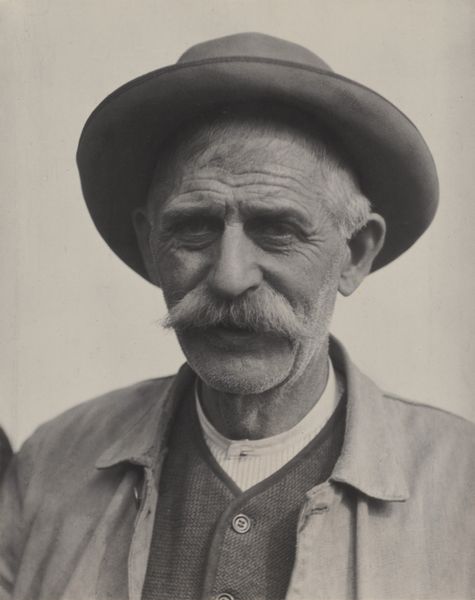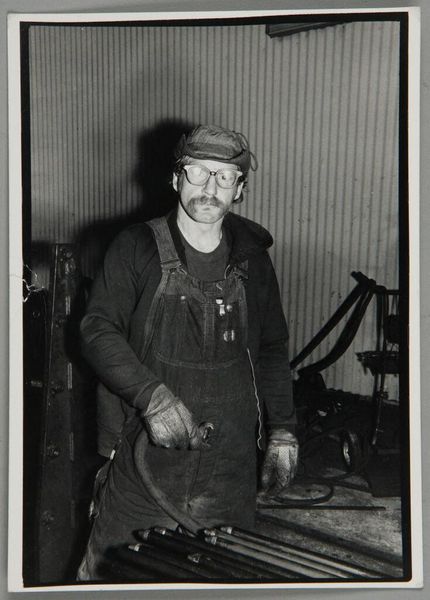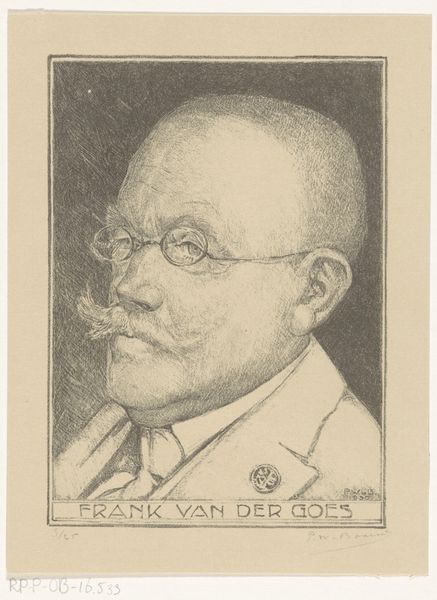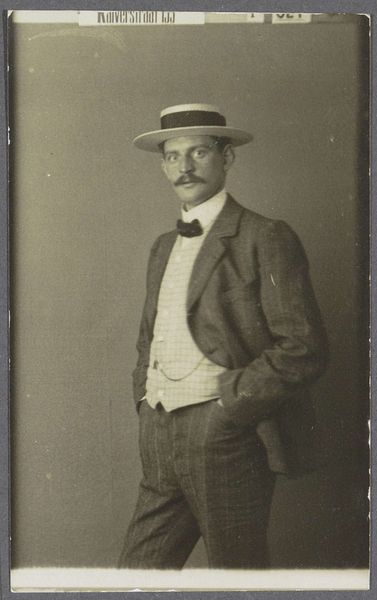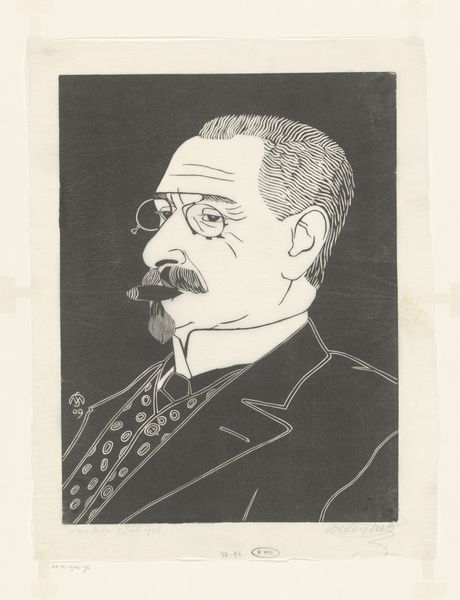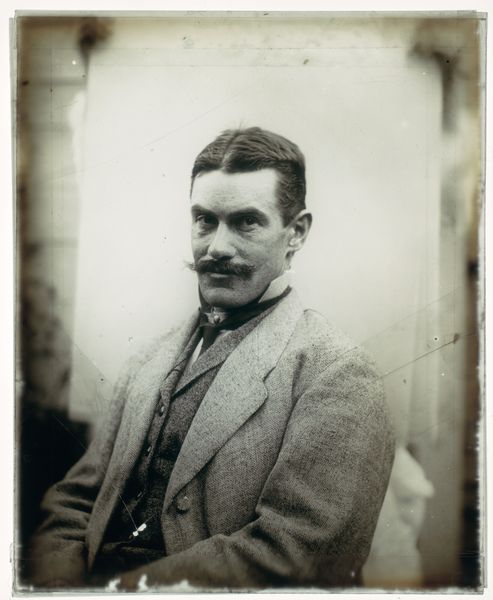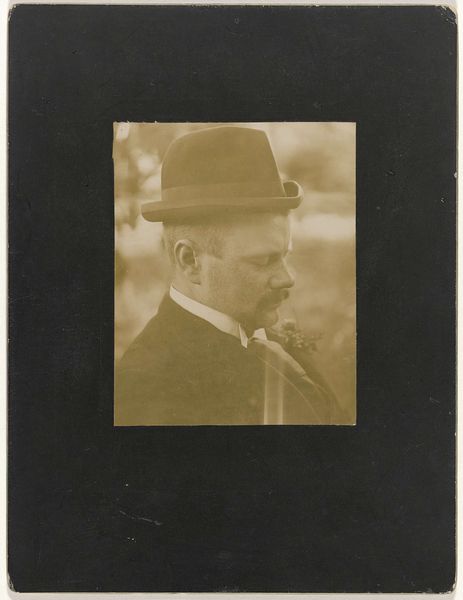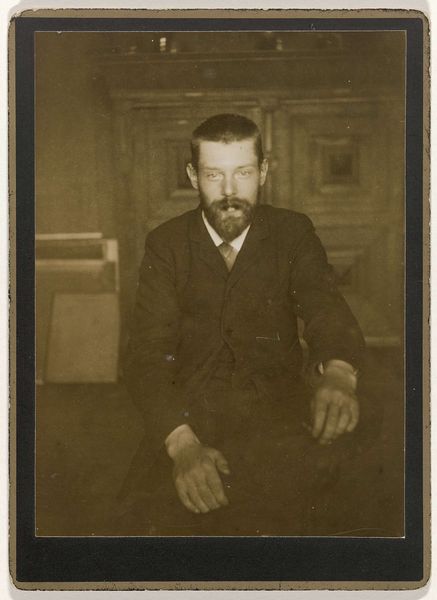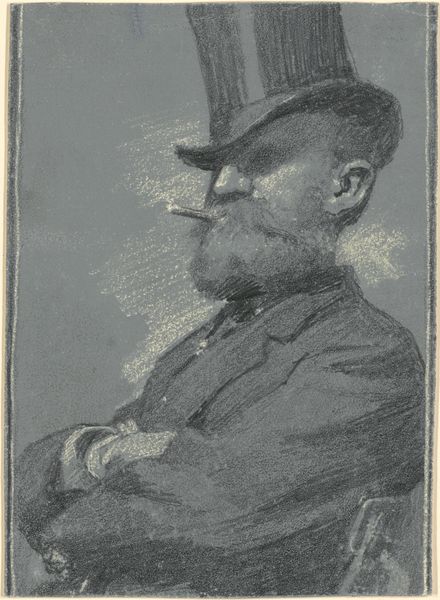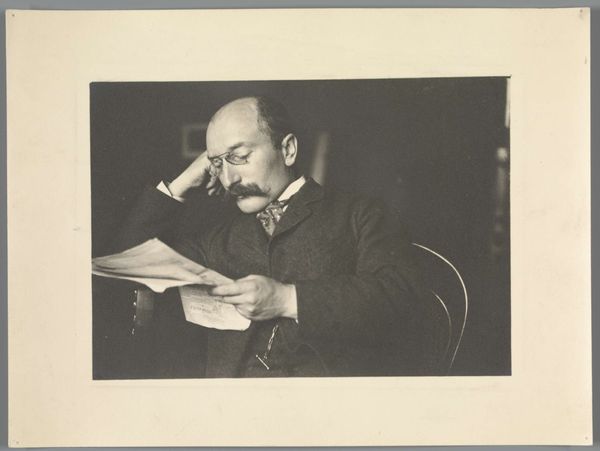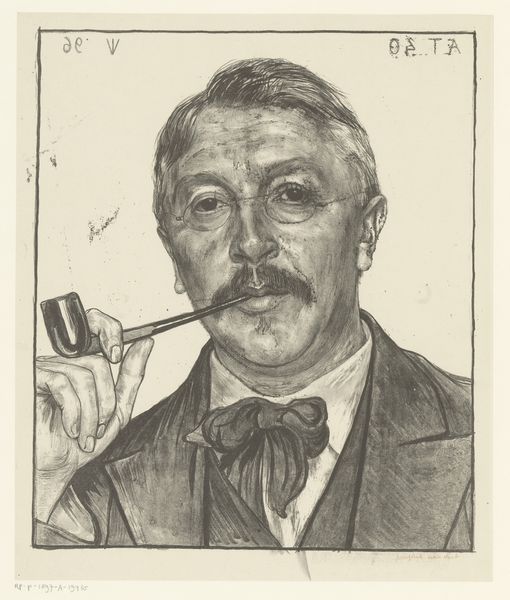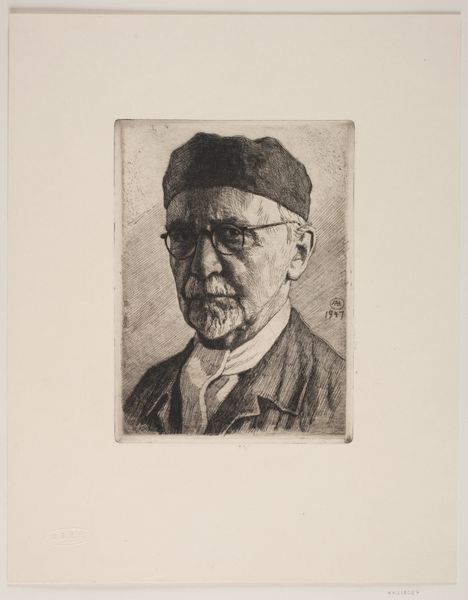
Dimensions: image: 230 x 170 mm
Copyright: © Estate of Albert Renger-Patzsch / DACS 2014 | CC-BY-NC-ND 4.0 DEED, Photo: Tate
Editor: This is Albert Renger-Patzsch's "Woodcutter from the Ore Mountains." It’s a striking photograph. The man's face is so direct, so…sturdy. What echoes do you hear in this image? Curator: The Ore Mountains… Doesn't the name itself evoke something primal? This portrait, beyond its documentary value, resonates with archetypes. The mustache, the cigar – symbols of virility, of rootedness. But consider the eyes behind the glasses. Do you see a hint of fatigue, perhaps even a premonition of societal shifts? Editor: I hadn't thought of the glasses that way, as a marker of modernity encroaching on tradition. Curator: Precisely. It is a collision of worlds, a moment captured where enduring symbols meet the anxieties of a changing era. What do we keep, what do we discard? Editor: It's fascinating how one image can contain so many layers of meaning. Curator: Indeed. The power of symbols lies in their enduring ability to reflect our shared human experience across time.
Comments
tate 7 months ago
⋮
http://www.tate.org.uk/art/artworks/renger-patzsch-woodcutter-from-the-ore-mountains-p79953
Join the conversation
Join millions of artists and users on Artera today and experience the ultimate creative platform.
tate 7 months ago
⋮
Woodcutter from the Ore Mountains is a black and white photographic portrait of an unidentified man. The composition tightly frames the sitter’s head and shoulders, which are angled towards the left, while his face turns to meet the viewer’s gaze. Emerging from a diffuse background, the man’s face is illuminated from the left by a bright light. The title reveals the nature of the man’s occupation: a woodcutter from a mountainous region in Germany bordering the modern-day Czech Republic. Without the title the photograph offers little visual information about the identity of its subject. Instead, the viewer’s attention is drawn to details rendered clearly and sharply within the image – round polished glasses, wiry moustache, furrowed brow, stubble, a half-smoked cigar – details that become so insistent in Renger-Patszch’s photographs as to form an ‘inner’ composition within the pictorial frame (Donald Kuspit, Albert Renger-Patzsch: Joy Before the Object, New York 1993, p.69). Renger-Patzsch used photography to isolate, frame and focus attention on details of the material world. By supplementing human vision in this way, his photographs encourage the viewer to ‘look at things from a new vantage point’ and take increased ‘joy’ in seeing the world of objects anew (Renger-Patzsch 1928, p.647).
